Well folks, it’s that time once again: time to spend the next few weeks arguing all over the internet about the best game of the year. As for PopOptiq, we’ve already done our squabbling, the result of which can be read below.
There was a veritable barrage of excellent games released this year, from overstuffed triple AAA bonanzas to a couple of games so indie as to be fully developed by only one person each. You’ll find both manner of games in our list as it follows.
We’re very happy with the way the list came out, and we couldn’t be prouder of the wide-ranging, exemplary titles that our team selected. We hope you will be as satisfied with the list as we are.
10) Axiom Verge
Developed by Tom Happ
Published by Thomas Happ Games
Available on Mac, PC, PS4
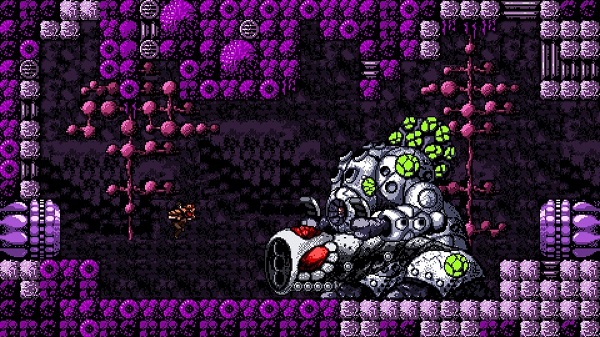
At E3 2015, Nintendo caused an uproar among their own fanbase when they announced Metroid Prime: Federation Force; a Samus-less, multiplayer FPS that absolutely nobody wanted. For years, Nintendo fans have been clamoring for a new, traditional Metroid game, and so their overwhelmingly negative response was as predictable as it was venomous. What wasn’t predictable was that the best Metroid game in years would come not from Nintendo, but from from a one man development team named Thomas Happ Games, in the form of the PS4 indie title, Axiom Verge.
Taking inspiration from and paying homage to classic side-scrollers like Super Metroid, Contra, and Bionic Commando, Axiom Verge stars a scientist named Trace who is caught in a lab explosion and wakes up in a strange new world. Trace is quickly recruited by a simultaneously ancient and futuristic being, and he takes up arms to help fight their cause in a war against a relentless enemy.
While the game has a couple of nagging issues in the form of erratic difficulty spikes and just a little too much backtracking, the overall experience is a rare treat of equal parts nostalgia and innovation. The graphical style, Metroidvania gameplay, and kick-ass soundtrack evoke memories of the glory days of the SNES, while some of the weapons, bosses, and puzzles add a modern twist on the genre. Featuring a tonne of items and weapons to collect, and around ten hours of gameplay, there’s more than enough bang for your buck, even without doing any of the optional exploration. Axiom Verge stands as yet another shining example of why the indie scene on PS4 is so exciting and important, and as a reminder that you don’t need a huge team and millions of dollars to make one of the very best games of the year. (John Cal McCormick)
9) Her Story
Developed by Sam Barlow
Published by Sam Barlow
Available On PC, iOS

What becomes more and more apparent with the indie scene as the years march on is its ability to shock and stun gamers with its new approaches to gameplay, design, and artistic influence. In fact this list contains three different games that were designed by only a single person, a fact that alone shows how much the gaming frontier has changed in recent times.
Her Story came out of nowhere, arriving with little fanfare and almost no advertising outside of word of mouth. Still, that hasn’t stopped it from making a massive impact on the industry and its audience. A game as sparse as it is involving, Her Story consists entirely of a fake computer desktop screen, a video database, and a series of keywords that are used to access it in a completely random order. There are no enemies, no levels, no worlds, and no stages. There is not even a single conceivable goal, outside of attempting to piece the story together, and yet somehow, Her Story works.
The credit for this success must be given, in no small part, to Viva Seifert, whose sole character and performance sit as the storylines main crux. Essentially the entire experience revolves around her, and were it not for her succinct portrayal of a troubled woman who may or may not be telling the truth, this project might have fallen flat with a tiny, dull thud. Of course Sam Barlow, who designed the game, deserves certainly as much commendation, if not more. But as the star of the show, it is Viva who our eyes center on, and Viva who makes Her Story soar from an interesting experiment into the realm of classic storytelling.
Coming in at a mere 2 hours in length, and with a price tag that runs at less than $7, there is no excuse not to play this game, and it may just change the way you look at game design and narrative in the world of gaming forever. (Mike Worby)
8) Undertale
Developed by tobyfox
Published by tobyfox
Available on Mac, PC

When Undertale released in mid-September, it quickly became a critical success with its bullet hell style turn based combat, character driven narrative and, most definingly, its quirky sense of humor. From its successful Kickstarter which raised over $50,000 to its several nominations at The Game Awards, nothing defines underdog triumph as clearly as Undertale has in 2015.
The humble efforts of developer Toby Fox bleed through in Undertale‘s dialogue and create some of the most endearing and relatable characters in a video game this year. The proof of the brillliance of Undertale‘s characters are in the exploding growth of the game’s fanbase. Fanart, memes, cosplay and even parody Twitter accounts of Sans and Papyrus have invaded social media and conventions. Whether such a fast growing fanbase is a good or a bad thing, it really is a testament to Undertale‘s success on the video game scene.
Undertale is also a mechanically sound game as well with an intuitive and thought provoking approach to the RPG. If you want to survive each battles onslaught of attacks, guide your heart through a uniquely designed bullet hell scenarios and dodge each attack to stay alive. Each and every enemy has their own method of attack, giving the player so much more quick time events to keep them on their feet while trying to survive. If you choose to walk down a more peaceful path, you can indulge in personality-based puzzles with the enemies to try to dig into their psyche and learn more about them.
With a story that offers a dynamic experience depending on how awful of a person you decide to be, Toby Fox’s surprise hit of 2015 is a hugely replayable game with a staggering amount of heart. Undertale is one of the most unique gaming experiences in the last few years, and widely deserving of a spot on this list. (Ryan Espinoza)
7) Super Mario Maker
Developed by Nintendo EAD Group No. 4
Published by Nintendo
Available on Wii U
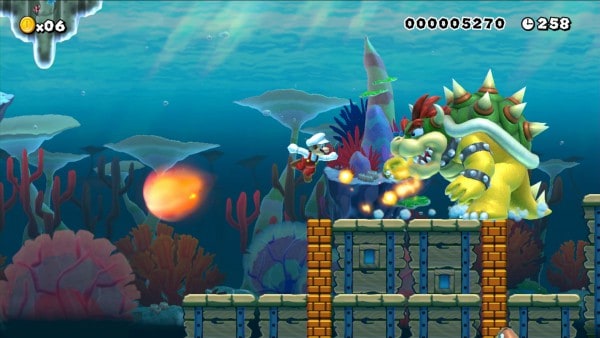
For the 25th anniversary of Mario, Nintendo could not have given a greater gift to their many longtime fans than that of Super Mario Maker. While the concept of a level creator is nothing new, the ease in which the game allows for players to express themselves is where the game really shines. Using the touchscreen on the gamepad to drag and drop a multitude of familiar items, enemies, and obstacles is an incredibly intuitive experience, allowing amateur designers to focus on building their vision instead of getting bogged down in technicalities.
It expedites the process so smoothly that the whole beautiful mess of creation is on display. With millions of stages already uploaded, experiences range from hellishly hardcore tests of precision to pleasant strolls through the mushroom kingdom, and everything in between. Some are crafted with forethought and exactitude; others are frustrating troll-heavy messes. But that’s the point; this is what the mass of gamers have to offer, and the variety of sheer imagination on display can be truly astounding for those willing to spend some time. Puzzling ghost houses, Rube Goldberg machines (increasingly maligned, but some nevertheless quite skillful in execution), variations on familiarity that toy with expectations, and even an existential meditation on the psyche of one Waluigi make up just some of the strangest, most inventive, and just plain fun of the massive amount of offerings.
Super Mario Maker is what you make of it. It opens the world of Mario and platforming up to new ideas, shows just what incredible game designers the masters of Nintendo really are, and with a potentially limitless amount of new material, including DLC and events, is the Nintendo gift that keeps on giving. (Patrick Murphy)
6) Life is Strange
Developed by Dontnod Entertainment
Published by Square-Enix
Available on PC, PS3, PS4, Xbox 360, Xbox One
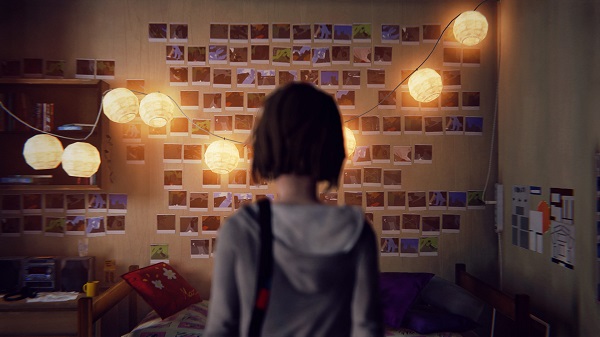
If you had the power to rewind time, what would you change? And would it turn out to be a change for the better or worse? This is the basic premise of Life is Strange, a little game nobody really knew existed back when it was released, and made by a little French studio named DontNod who’s first title, Remember Me was a commercial flop. It didn’t take long however until word got around that this is one of the best point-and-click games ever made.
Released in five episodes throughout the year, Life is Strange is a game that isn’t really about action but decisions, and much like the interactive dramas made popular by Telltale, Life is Strange is all about the story. You play as the teenage Maxine Caulfield, an aspiring photographer at a boarding school who, while exploring her surroundings, finds herself in the middle of a missing person’s case, a double homicide and a catastrophic event that can wipe out her small hometown. Every choice, no matter how big or small, carries weight, causing players to second guess every decision they make.
As with any game of this genre, almost the complete value of Life is Strange rests on its narrative, and though it is often plagued by storytelling tropes, Life Is Strange is a beautiful, heartbreaking, and surprisingly dark coming of age story with a gorgeous, unique art style, a hip indie rock soundtrack (that includes Mogwai, Bright Eyes and Syd Matters), and a trio of cliffhangers that will leave you at the edge of your seat. Equal parts My So-Called Life, Twin Peaks and Donnie Darko, Life is Strange set a new bar in cinematic adventure games and is not to be missed. (Ricky da Conceicao)
5) Ori and the Blind Forest
Developed by Moon Studios
Published by Microsoft Studios
Available on PC, Xbox One
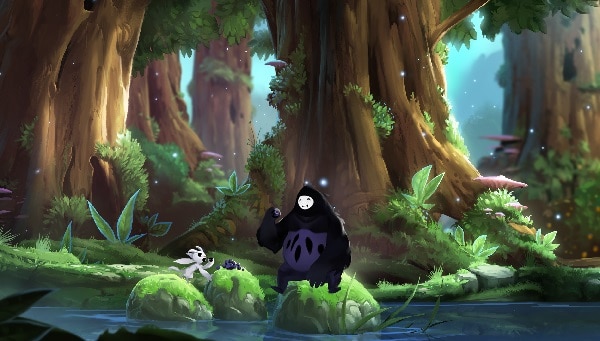
Ori and the Blind Forest stands out among the crowd of aesthetically pleasing Metroidvania games piling themselves onto digital storefronts by trimming the fat and focusing on rock-solid mechanics. It goes without saying that Ori is drop-dead gorgeous, with extremely intricate animation that don’t lose detail with each layer of the environment. There is a narrative throughout the game spoken with little dialogue that tells a quiet, often sad tale. While it doesn’t stray far from clichés, the emotion Ori manages to evoke with so little is worth applauding.
What classics in the genre can’t compete with here is the pacing. The world of Ori is contained and sectioned up enough as to not be overwhelming or confusing. There is some thinking involved with progression, as with any game of this kind, but it’s difficult to ever get lost. Because of this, exploration is always an exciting step towards the next area, all of which feature cool new platforming mechanics, from wall-running to portals that teleport you around the screen.
Ori stands tall with the best of the best when it comes to just how responsive and tight its controls feel. Players can fling the furry protagonist around the environment at a zippy pace, but every frame reeks of intention. Sticking out from the pack once again, Ori also features an inventive checkpoint system. Every checkpoint is placed by the player with a refillable bar, which adds another layer of depth to exploring. Players are forced to become cognizant of their own ability to trek through the environments and place checkpoints accordingly.
In the end, few games of this nature stand out from the pack considering just how many there are, but Ori absolutely does. (Matthew Petras)
4) The Witcher 3: Wild Hunt
Developed by CD Projekt Red
Published by CD Projekt Red
Available on PC, PS4, Xbox One

There’s so much to love about The Witcher 3: Wild Hunt it’s hard to decide where to start talking about it. This isn’t just how to make a good game, but how to make a game people will still be talking about, and more importantly playing, for years to come. The Witcher is, without any doubt, an absolute epic, even in an age where that term is completely over used.
Geralt’s search for Ciri provides a perfect back drop for the myriad of adventures available in the massive open worlds of Velen and Skellege. There’s a sense of urgency to your quest, sure, but there’s time to explore, figure things out, and experience the world at your own pace. But when the plot does get going properly, as it does in bombastic form for the last 10-15 hours, it’s sure to make you drop what you’re doing and pay attention.
It’s not just the good writing that elevates The Witcher 3, since people wouldn’t play it if the gameplay sucked. Thankfully, it’s great, smoother and more refined than its predecessor and putting The Witcher more in line with action RPG greats like Dark Souls or Dragon’s Dogma. That’s the surprising beauty of The Witcher 3: its absolute simplicity. This is a game we’ve all played before, just presented to us at its absolute best, refined over and over again to perfection. There’s nothing particularly new in The Witcher 3, but what is on offer is the absolute best of its kind. This old dog doesn’t need new tricks when it performs its normal bag better than everyone else.
It’s not a perfect game, that’s for sure. The character progression system is nothing short of disappointing, as a level 30 character feels almost no different than a level 3 character. It’s also challenging, infuriatingly so at times, even on the lowest difficulty so some players may find that a hindrance. There’s a slew of bugs and glitches, and some of the game’s mechanics aren’t as well explained as they could be. But if you can get into The Witcher, and that’s not a hard thing to do, none of this will matter. Simply put, the game is so good that you have to really look for things to not like. The Witcher 3 is an absolutely amazing game, with hundreds of hours of content, and sure to be in the RPG pantheon for years. (Andrew Vandersteen)
3) Fallout 4
Developed by Bethesda Game Studios
Published by Bethedsda Softworks
Available on PC, PS4, Xbox One

The Mad Max and Just Cause 3s of the world give us these huge sandboxes to play around with, but at the end of the day their worlds feel as if they exist for the sole purpose of giving us things to blow up, and thus they lack soul. On the other end of the spectrum we have Fallout 4‘s post-apocalyptic Boston, which feels like a real place, it feels lived in. It feels like a world that existed long before the player’s arrival, and will continue to go on long after your gone. From the tiny settlements of people just trying to scrape by, to the four realistically motivated organizations vying for power in the commonwealth, everything is drenched in context and heavily grounded in its own reality.
Fallout 4 succeeds not only in presenting a massive, immersive, and believable world, but also in providing a nearly overwhelming amount of things to do. The creative player can spends dozens of hours using the deceptively deep and intuitive base building system to create their own unique fortresses. The loot hoarder can venture out into the wasteland to hunt legendary creatures, while the player who loves customization can spend their time fine tuning all their guns and armor. The adventurers can sift through the fallen ruins of the old world, discovering and reading the hundreds of pages worth of lore carefully crafted by Bethesda, while those simply looking to play the main quest line can enjoy a very interesting and thought provoking story. And the player who enjoys a bit of everything can easily sink hundreds of hours into the game by touching on everything it has to offer.
Bethesda has made improvements all across the board, from giving the game a much more vibrant color pallet than the previous two Fallout games, to refining the shooting mechanics and VATS system. Fallout 4 certainly isn’t the best looking game of 2015, nor is it the most technically sound, but what it lacks in polish it makes up for in depth. The attention to detail given to the world gives it a feeling few other games can hope to achieve, and that in combination with its solid gameplay and interesting story make Fallout 4 one of 2015’s must-play games. (Matt De Azevado)
2) Metal Gear Solid V: The Phantom Pain
Developed by Kojima Productions
Published by Konami
PC, PS3, PS4, Xbox 360, Xbox One

Few games released this year were riding on the kind of hype and controversy that Metal Gear Solid V: The Phantom Pain was at the time of its release. Between the mixed response to Ground Zeroes pricing, the controversy over Quiet’s wardrobe (or lack there of) and the Kojima/Konami debacle, it was hard for gamers to even focus on what they should be concerned about leading up to its launch back in September.
Luckily, all of those thoughts and worries fell silent, at least for a time, when MGSV finally found itself in the hands of the fans who had been anticipating it for nearly seven years. What came out of all that strife was a gem of a game, one that will be remembered not only among the best games of the year, but likely even among the best of all time.
With unprecedented stealth mechanics, dozens of ways to complete every single mission, and enough side missions, base building, and miscellaneous quests to keep players busy for months, Metal Gear Solid V absolutely delivered on the hype that had preceded it, and then some. With Kojima and Konami not even speaking to one another, and the full story still hidden behind NDAs and other nonsense, we may never see a game like this again, but MGSV will fill the void of that phantom pain for a long time to come. (Mike Worby)
1) Bloodborne
Developed by From Software
Published by SCE Japan Studio
Available on PS4
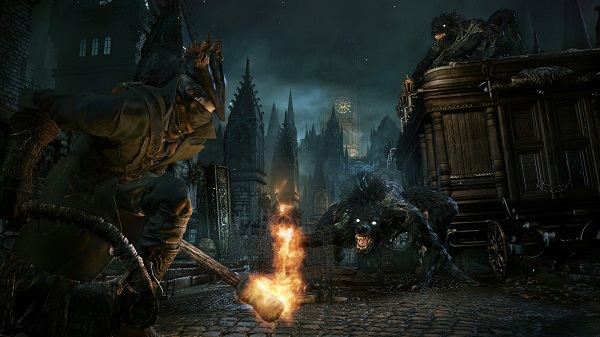
Prior to the beginning of the current console generation, there were many analysts, enthusiasts and armchair critics prognosticating the downfall of video game consoles as we know them. The rise of mobile and tablet gaming had led a lot of people, smart people, well informed people, to believe that the days of physical discs, AAA blockbusters, and standard control pads were over. Oh how wrong they were. As PS4 and Xbox One consoles continue to fly off the shelves much more quickly than their predecessors did, and with both manufacturers now adopting a popular “gaming first” approach, it seems that gaming is going from strength to strength.
People do still want to play video games. People do still want to sink their teeth into a robust single player campaign. People do still want to be challenged and rewarded for their perseverance. And in 2015, no video game truly encapsulated those sentiments more succinctly than Bloodborne did.
A brutal, punishing, action-RPG, Bloodborne is a game that doesn’t hold hands and doesn’t pull punches. It thrusts the player into one life and death battle after another, with death generally being the likely outcome. Standard enemies are tougher than the bosses you’d encounter in most games, and the almost complete lack of hints or direction from the game can leave players feeling lost. But while it’s easy to see how this set-up could be frustrating, such is the quality of the design of the game that the ultra-rare moments of elation one experiences playing Bloodborne are worth all the moments of despair. Killing a troublesome boss on your thirty-fifth attempt evokes feelings of joy and relief that most other games can’t hope to replicate. And it’s those feelings that make Bloodborne the best game of 2015. (John Cal McCormick)

